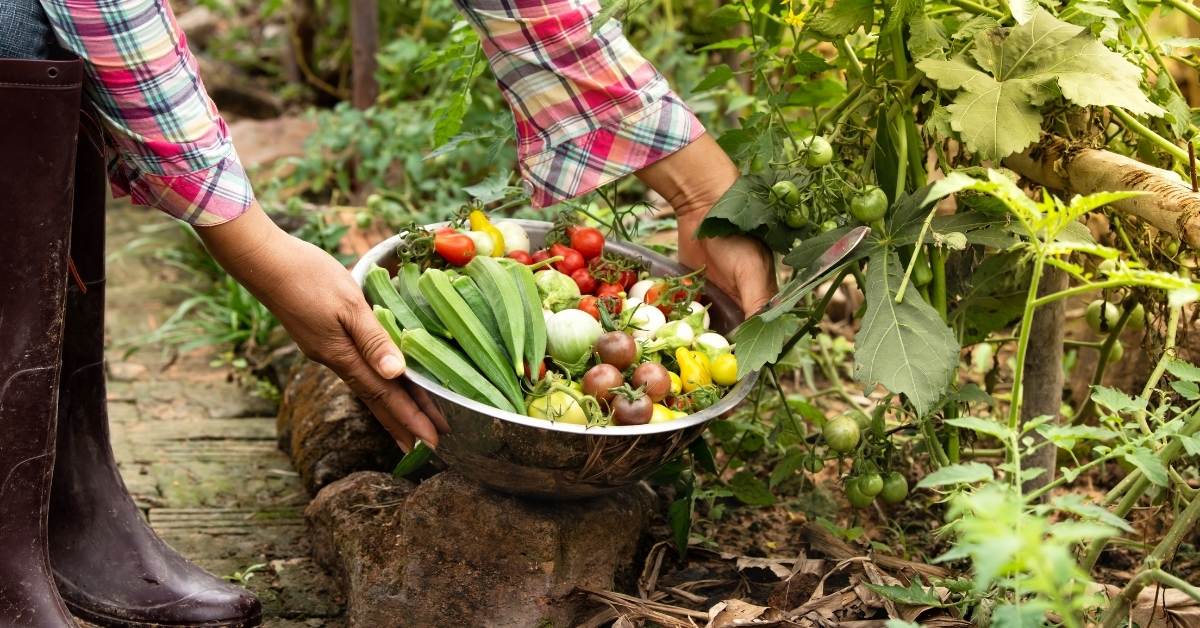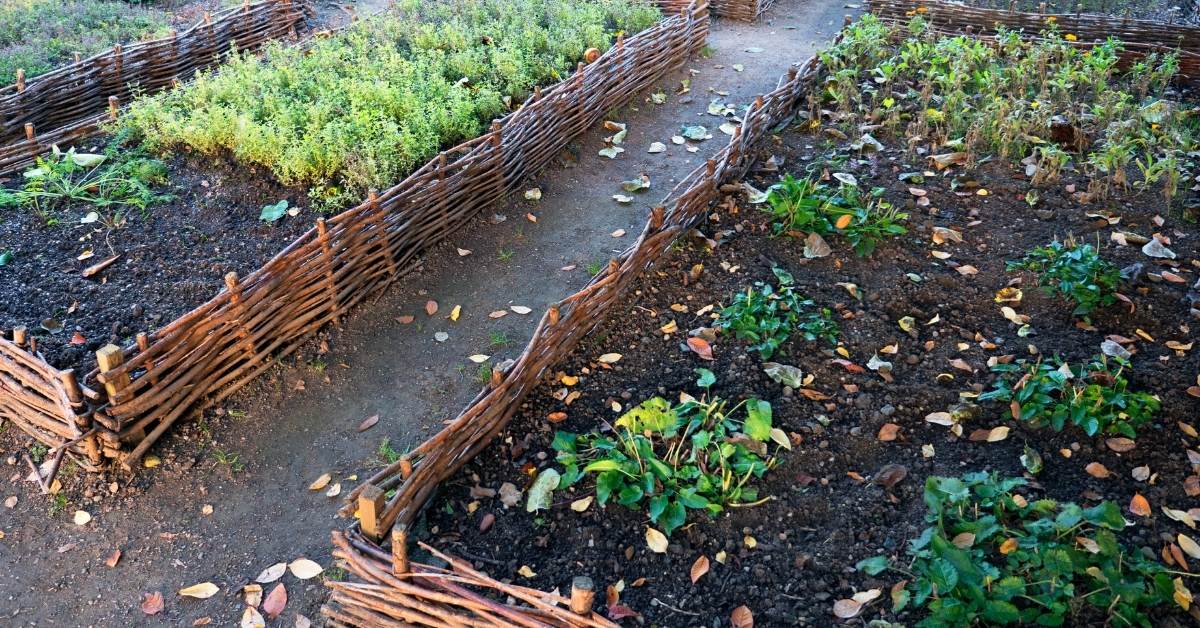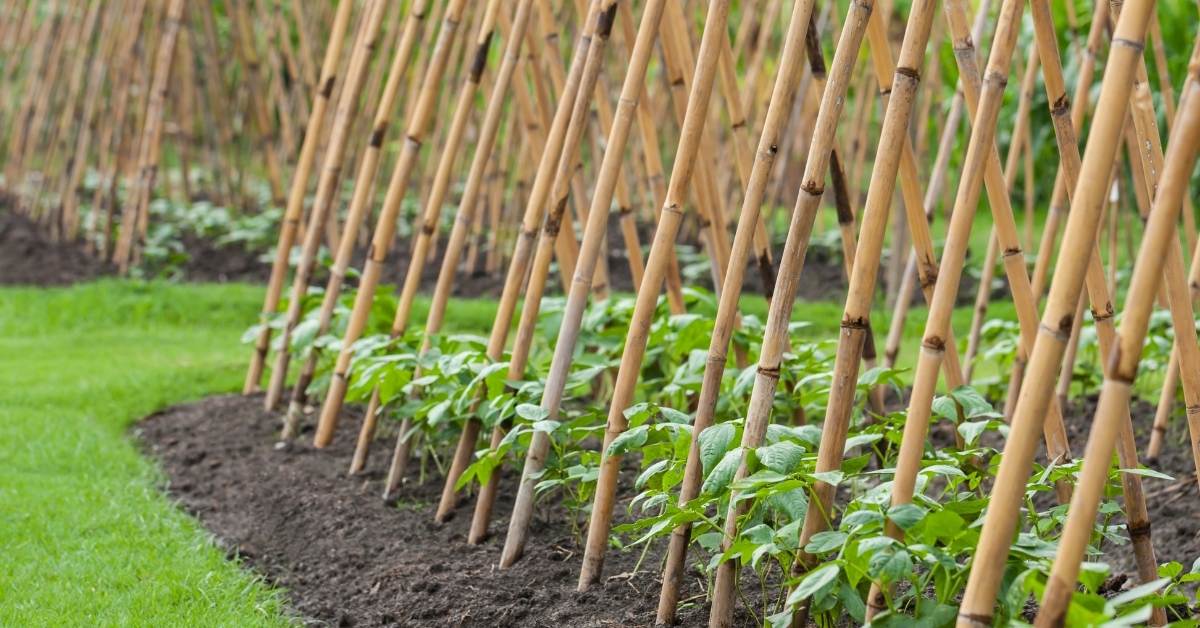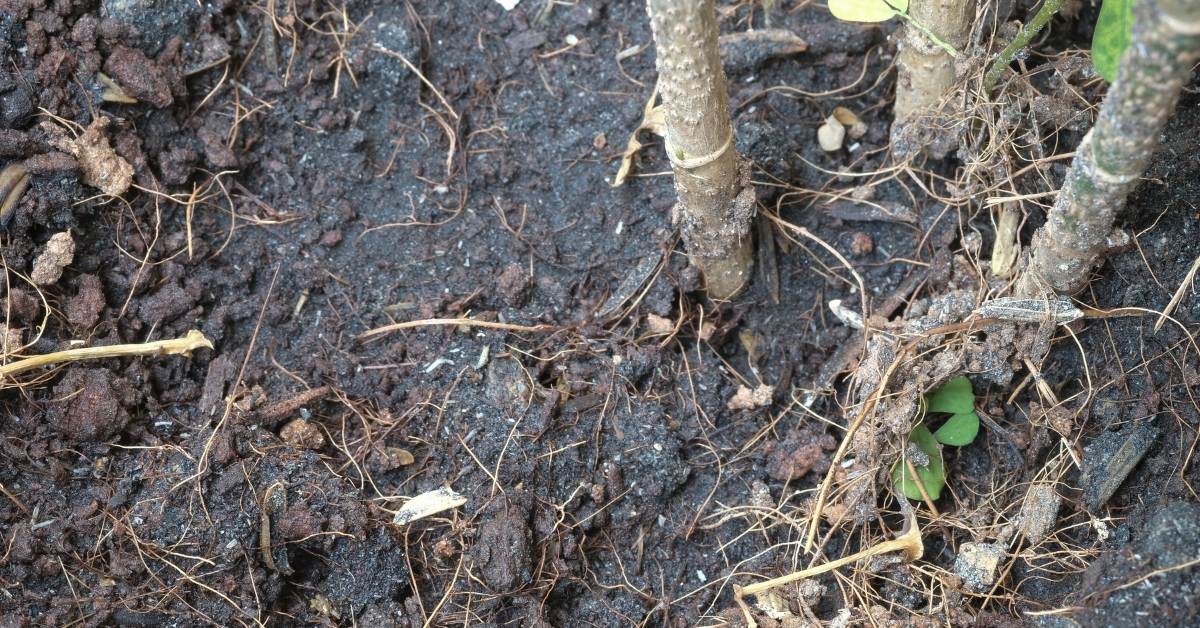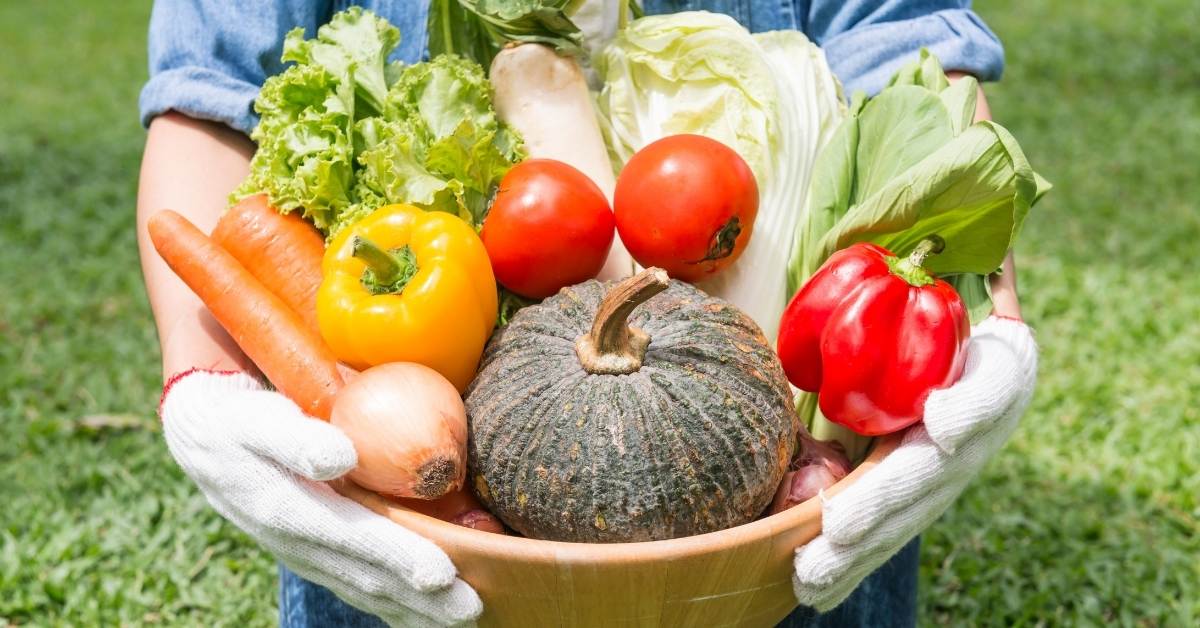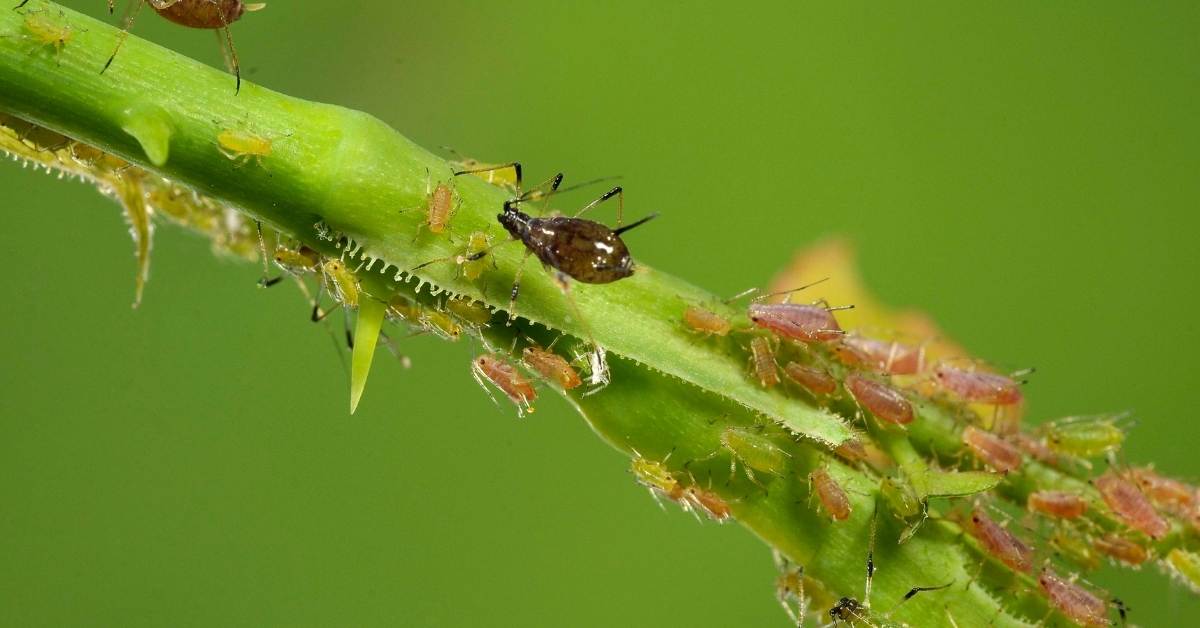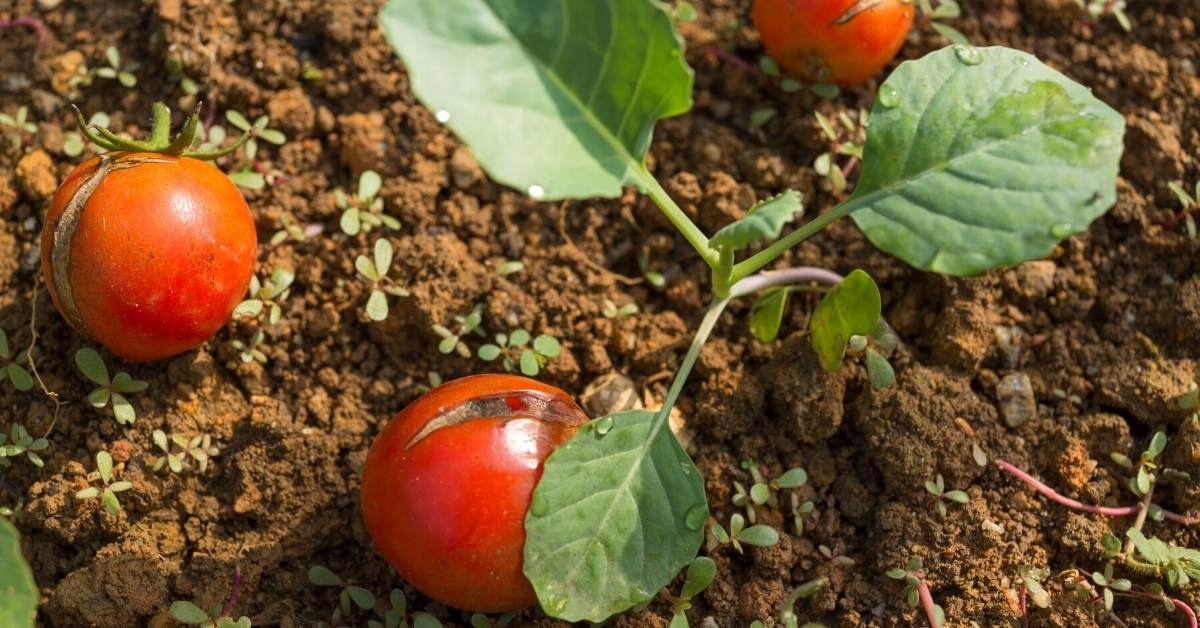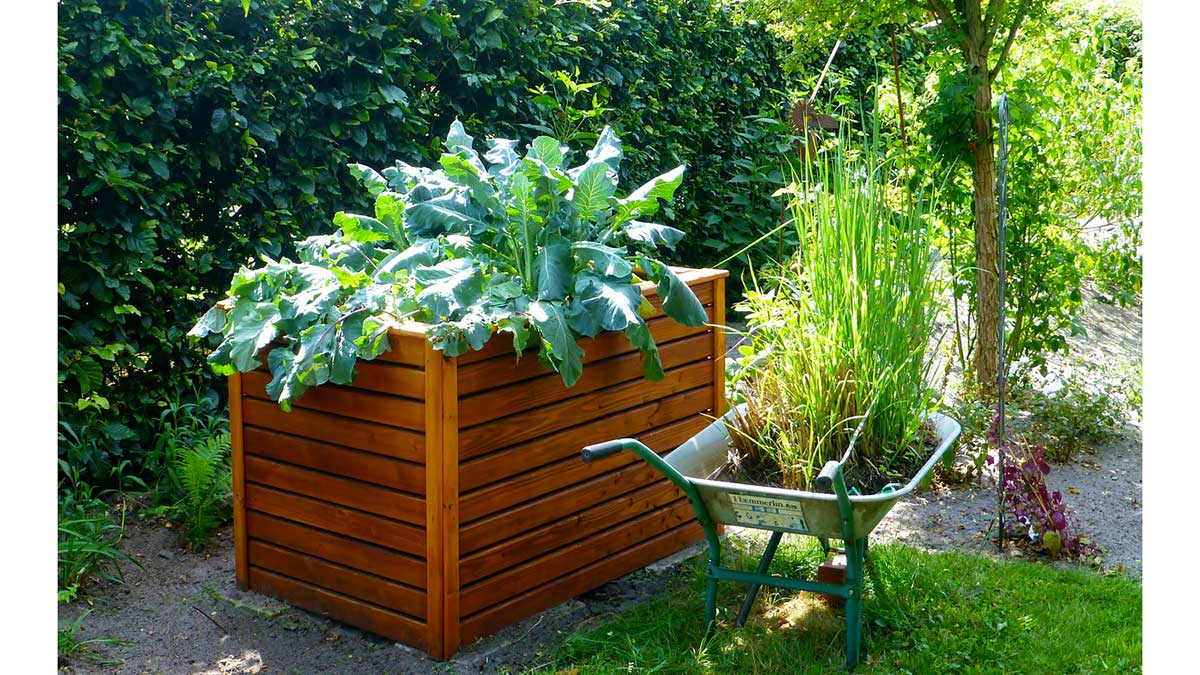Achieving sustained increases in production from your organic vegetable patch without depleting your soil and being over-run by pests and diseases is a big task. But it is a worthy challenge, so long as you have the persistence to stick with implementing the proper steps.
From my years of experience in growing vegetables with organic methods, I know you can never get all aspects of your food garden right at the same time.
There are some things that happen which are out of your control, such as the weather or your available time. However, there are proven tactics that can provide a rhythm of activity for a consistently productive garden.
In this post I will talk about 6 the best tips to increase vegetable garden production and boost your yields in 2022 and beyond...
1. Garden design
- Ascertain that your garden location receives sufficient sunlight.
- As much as possible, use natural materials to construct garden beds and under the beds.
- Make your beds no wider than 1 m, simple to reach, and attractive.
Vegetable garden climbing frames
It’s amazing how much you can increase the production of your food garden space with climbing frames. Climbing frames also add a level of beauty and creativity to your garden.
Types of climbing frames
Stakes – A simple wooden stake 1-1.5m long for tomato, capsicum, or eggplant. Put the stake in before you plant.
Rectangular frames – These can be any length based on the size of your garden and no more than 1.5m high so that you can reach the top easily. I tend to use a wire (chicken wire or dog wire) or solid plastic mesh as the climbing medium.
The posts you put in to support the climbing medium should be roughly 1m apart and be well secured to the climbing medium with twine. Use the following steps in order:
- Make post holes of about 1/2m depth and 1m apart in your garden beds;
- Put the climbing medium in place on the garden bed and drop the polls through it and into the post holes;
- Pack the soil around the polls with your foot;
- Tie the climbing medium to the polls;
- The plant you’re climbing vegetables along the base of the climbing medium, and make sure it starts no more than 30cm above the ground.
Other shapes – You can use pyramid shape frames. These look good, but in my experience can become unstable for a heavy fruit such as cucumber, especially if it’s windy.
What plants are suitable?
Frame – Cucumbers, climbing beans, climbing peas (sugar snap and snow peas), Choko, Ceylon spinach, passionfruit, and grapes;
Stake – Tomato, eggplant, and capsicum.
What is the benefit to increase vegetable garden production?
- Increase the potential for flowering, bee pollination, and fruit production;
- Reduce the potential for mold infestation on leaves so long as you do not water on the leaves;
- Allows you to use the air to grow food, so when you have limited space, you can dramatically increase your food garden yield.
Management of your climbing plants
- When laying out your garden beds for plants needing climbing frames, make sure you plant them in a straight line;
- Beware of erecting climbing frames after the plants have grown up a bit; it is very easy to damage the plants’ tops and roots by doing this;
- For plants that have tendrils (such as beans, cucumbers, peas, passion fruit, grapes, and Choko), you will need to guide the tendrils onto the climbing frame, to begin with, and once they have caught on, the plant should thereafter find the frame without your help;
- If it is very windy, make sure your frame is extra sturdy, poles that are deep in the ground are a big help;
- For plants that are staked, progressively tie the plants to the stake as they get taller; otherwise, the stalk will bend and could break;
- For perennials such as some climbing beans, passionfruit, and grapes, prune back the dead growth each year but do not pull up the plant.
2. Planting
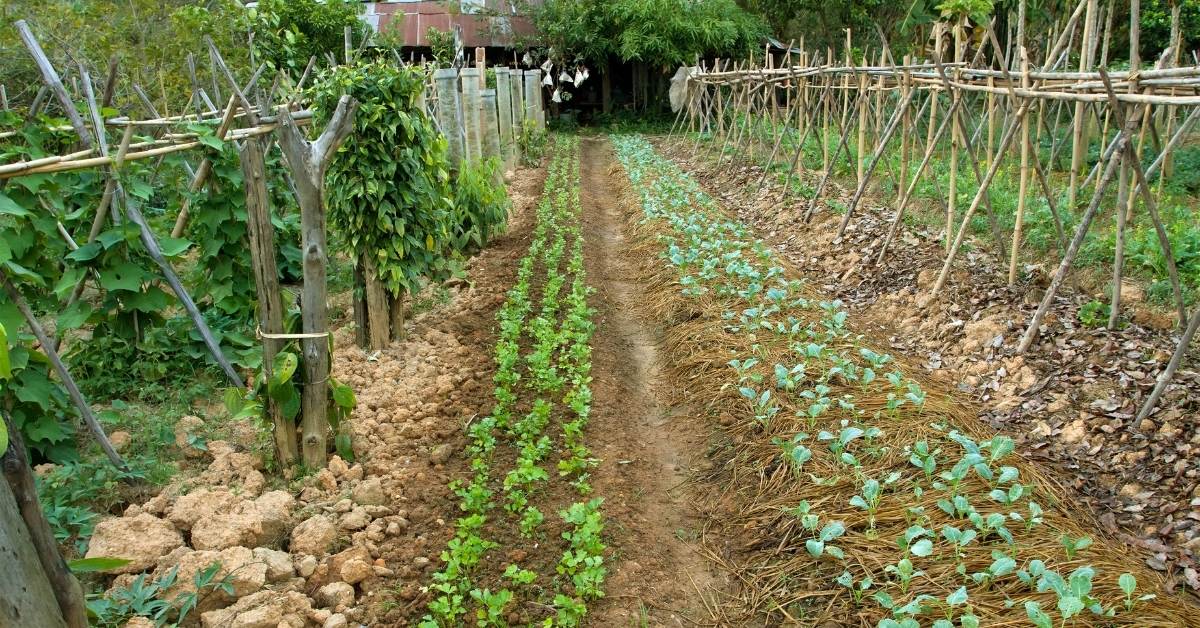
- Use the highest quality planting material possible, preferably certified organic.
- Using a planting calendar and working with optimal planetary periods, always plant in a season.
- Use succession planting and intercropping between your primary crops to cover all bed space.
- Encourage beneficial insects by using companion planting.
Interplanting vegetables to increase your harvest
A common question for the passionate food gardener is, “how do I get more food from my patch.” Working on healthy soil, managing moisture levels, and planting in season are the foundation activities.
Inter-planting is one technique that can quickly lift production from your vegetable garden beds. It is fun to work with and keeps up a constant supply of food from your growing area.
Interplanting techniques
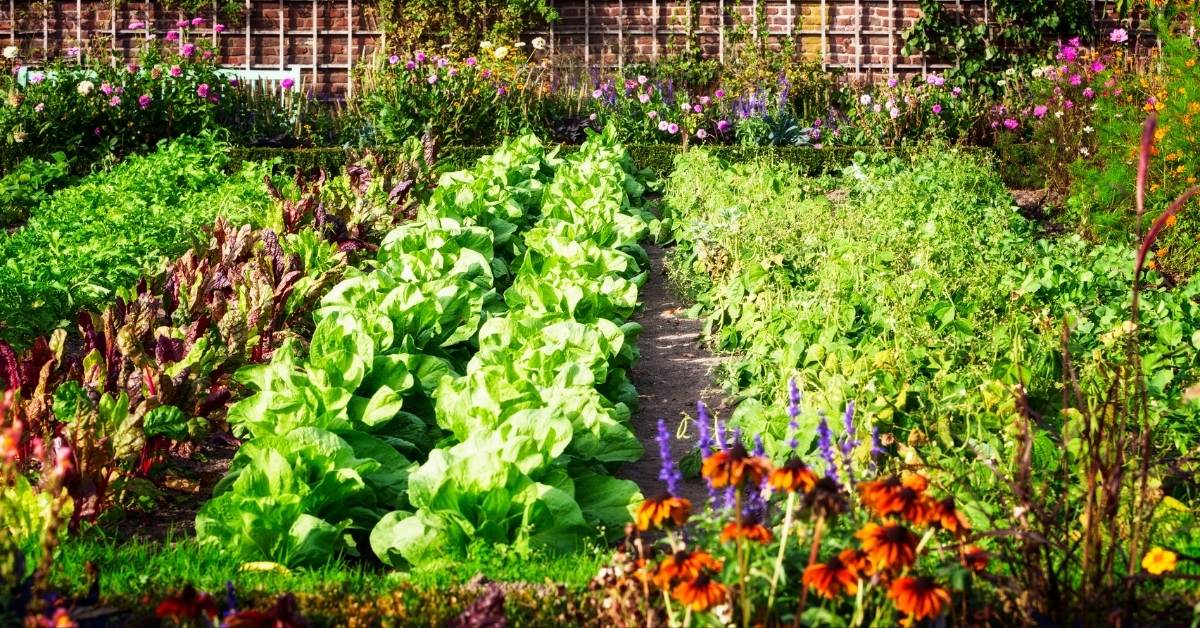
Inter-planting is similar to companion planting in that several species are planted into the same bed. Still, the purpose is less of mutual symbiotic effects to maximizing the utilization of your garden space.
The main crop, such as cabbage, bush beans, squash, etc., that takes a long time to fully mature, is inter-planted with quick-growing, quick maturing crops such as lettuce, Asian greens, radishes, spinach, and turnips. The secondary crop will normally be harvested before the main crops have spread out to fill the space.
Another kind of inter-planting is practiced when a tall-growing main crop in your beds is grown with a low, crawling plant that will provide ground cover. Good examples are spinach under staked tomatoes, lettuce below cucumbers on a climbing frame, or under fennel and squash beneath pole beans and corn.
I often grow lettuce in our hot season in the shade of the cucumber climbing frame, and this shade tends to stop the lettuce from bolting.
You could also consider other types of crops for inter-planting that are not so fast-growing but take up very little space and are generally good companions for most vegetables such as garlic, spring onions, and leeks.
I normally intercrop spring onions and leeks with strawberries as they fit perfectly between the strawberry plants, like the water. Because they are from the onion family, their smell deters the slugs that can become too friendly with the juicy strawberries.
In working with inter-planting, I am not advocating a completely unstructured free for all of all types of plants in your beds. I know some gardening advice can lead you down this path, indicating it works because there is no consistent concentration of crops in one space.
In my experience, it is much better for your soil and productivity to have a rotation system and use the spare space in your beds for inter-planting and companion planting. So it is very important to incorporate sound and consistently practiced crop rotation principles in choosing your main crops. The main crop is the predominant crop in the bed.
To inter-plant while the main crop is underway, remove any weeds, loosen the soil gently between the existing plants being sure not to unsettle its roots, mark your planting location and sow accordingly. Whichever of the two crops is first to finish should be delicately twisted out of the soil and not disturbing the remaining crop.
Inter-planting allows you to plant tactically and results in a big lift in the productivity of your space. You can use our companion planting search to help with crop selection, in addition to cropping duration of your selected main crops and inter-plants crops on our plant pages, all within our Organic gardener site.
3. Water use
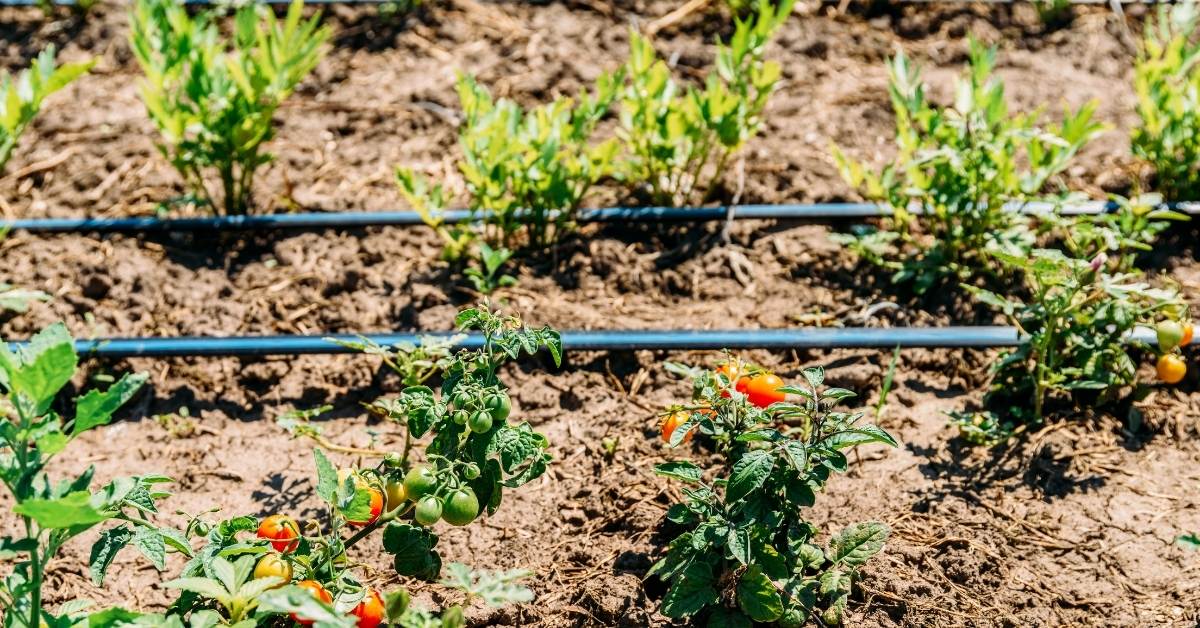
Make sure your beds are level and gently mulched (no chemicals on mulch). If you’re using chlorinated city water, make sure it’s free of chemicals before you use it, especially for seedlings.
Understanding how much water your crops require based on their growth cycle will help you prevent overwatering or underwatering.
4. Soil Management
- Incorporate a rotation plan and a green manure crop into your garden management.
- Using living processes like green manuring, compost, and biologically active inputs, create an annual and monthly rhythm to fertilize your soil.
- Plants that can be turned into liquid fertilizers should be grown, and weeds should be used in the same way.
Tips for healthy soil in your food garden
Maintaining healthy soil is the primary task of any successful food gardener who seeks to work with organic methods.
The most rewarding approach involves you first creating a basic activity rhythm each year to care for your soil, which happens no matter what you grow.
This activity can then be supported by specific soil enhancement activities based on the crops you plan to grow and where you need to be reactive for extremes of climate that affect the vitality of your plants. An attack of pests and diseases is often the most apparent manifestation of poor soil management.
Unfortunately, many food gardeners operate on the reactive approach only, which means they only do stuff for the soil when their crops are not going well. It really is a bit late at that point to fix the problem, and this approach is like not caring for your body and relying totally on the medical system to keep you healthy.
You can fake it for a while, but eventually, your body will tell you it really needs some consistent nurturing.
Here is what I include in my basic yearly soil management rhythm:
- Composting – Working with processes to make compost from virtually all organic wastes from our land and have the best quality compost available to fit the peak planting times during the year.
- Green manure crops – Consistent use of green manure crops around the food garden every year and using legumes under fruit trees as permanent living ground cover
- Crop rotation – Using the biodynamic method of crop rotation in a 5-way pattern of green manure, leaf, flower, fruit, and root to help maintain a balance in the soil from the food you grow
- Soil additives – My preference is for biodynamic preparations BD500 and BD501 applied two times per year. And BD cow pat pit liquid six times per year.
- Companion planting – Using soil enhancer plants throughout your food garden.
- Appropriate soil care – Moisture management, mulching, and soil/plant hygiene
Out of that basic rhythm, I expect:
- Greater strike rate with seeds, when you are planting direct
- More robust growth in food plants – Not necessarily bigger as significant is often not the best with growing food. I suggest comparing the flavor of a puffed-up strawberry from a supermarket to the taste of a small organically grown strawberry from a home garden.
- Greater capacity for plants to withstand climate extremes of heat and cold
- Greater water holding capacity of the soil, so you will not need to water as much.
- Stronger pest and disease resistance of plants
- Better flavor and nutritional content in harvested plants
- Longer natural shelf life of harvested plants
- Healthier seed production leading to more opportunities for seed saving
From a substance point of view, healthy soil has:
- A good balance of clay, sand, and organic matter
- Has life in the soil, both visible and not visible to the eye
- Has a reasonable balance of minerals and chemical compounds
- It has a strong soil smell
- It holds together when you pick it up in your hand but is not gluey like wet clay
I think it is essential to work with processes that you can understand and observe and not get too bogged down with chemical analysis. The most significant impact you will get with your soil management is stimulating life in the soil, and out of this, a healthy balance of minerals and chemicals will evolve, which will increase vegetable garden production. In other words, living processes create balance.
Creating a well-balanced compost
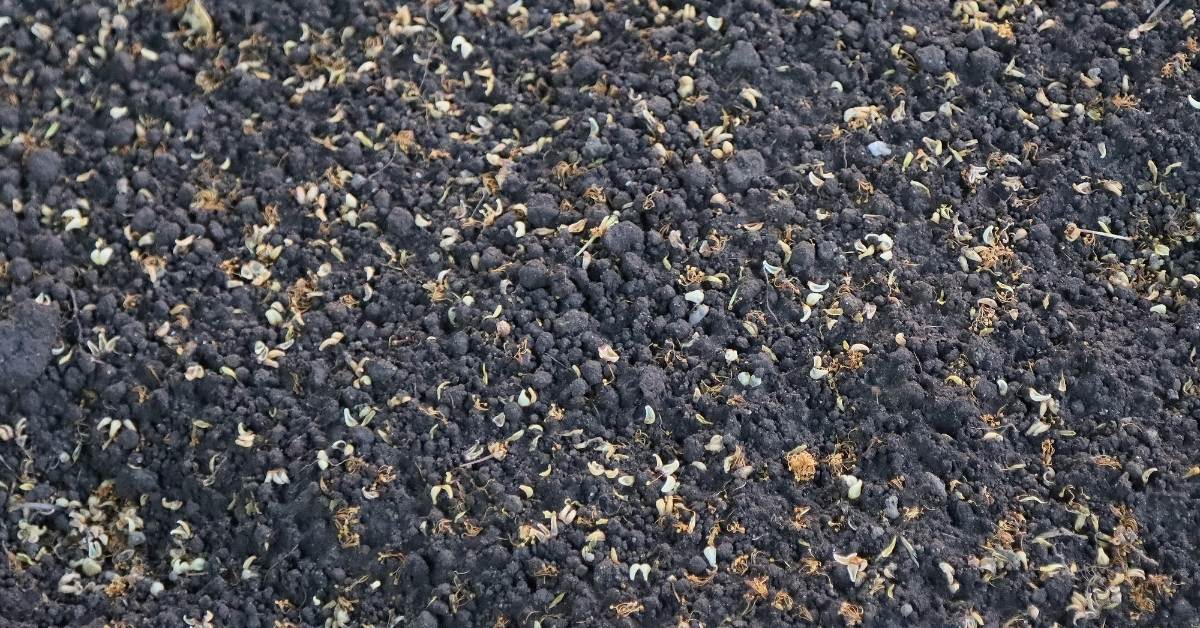
It’s easy to believe that producing healthy compost for your vegetable garden and orchard is as simple as gathering the appropriate ingredients and waiting for it to brew. That’s how nature works. Consider a forest floor where, with no human interference, the live biological process progressively breaks down organic materials into the soil.
But your vegetable garden and orchard are not like the forest. Your food garden is likely to have a mixture of many plants, and most of them will not be native. You will be combining plants that do not grow naturally with each other and many of them, such as annual vegetables, will be very demanding on the soil.
As a successful food gardener, it is essential to realize you need to potentize or enhance the organic processes to manage your food garden so that you achieve a continuous improvement in your soil. I see this as the over-arching principle in all of your activities in the food garden, and composting is a vital activity in your success tool kit.
Composting is an alchemical process where you become directly involved in creating the conditions for life to flourish in your food garden. I use a number of composting processes, but I wanted to really concentrate on some simple principles in managing any compost heap, whether it be a large open compost heap or a compost bin.
For achieving a guided decomposition of the compost heap, the four elements of earth, air, water, and fire must be in a balanced relationship:
- Soil is all of the solid matter in a heap, including the 5% of soil mixed into the compost with mineral additives.
- Water is critical, especially in the early stages of the heap, for bacteria in their metabolism and breaking down the organic matter. The right amount of water is indicated where a squeeze of the compost with your hand will feel like a wet sponge.
- The air element involves making sure the compost is not too tightly packed so that oxygen is available for aerobic bacteria. A good mixture of bulky and fine organic matter helps.
- The fire element involves the initial heating in the compost heap due to living activity, so long as the organisms have the right mix of air, moisture, and earth.
Some troubleshooting tips:
- If the compost heap does not heat up within 7 days of making, you have either too much earth (soil/minerals part of the earth) or too little moisture or not enough air. Loosen the heap with a pitchfork, add water, and observe for a few days to see if it warms up. If too much soil (earth element), add some bulky organic matter.
- If the heap is too wet and compacted, it will not heat up, be putrefy, and have strong odors. Thus you need to bring in more air by loosening the heap. This can happen quickly if you have very heavy rain falling on the heap a few days after making it. Cover the heap from rain if you know a big rain event is coming.
If the compost heap is balanced among the elements, the smell is pleasant, the color will become a rich brown, and the worms will multiply once it cools down. I use biodynamic compost preparations made from common herbs to help potentize and guide the creation of the highest quality compost.
5. Plant Management
- Develop your plant observation abilities and utilize each day to get to know your surroundings.
- Pay special attention to plant vitality while dealing with immature plants or plants exposed to extremes of weather.
- Don’t over-fertilize your plants; just aid them when they need it.
6. Harvesting
- Choose crops that may be harvested in stages during their growth cycle.
- To allow each plant to provide more food over time, only harvest a little amount of it at a time (you can get production from one silverbeet or kale plant for up to 12 months by doing this).
- Allow the healthiest plants to go to seed so that you may store the seeds for your future harvest.
Diseases and pests
- Encourage tiny bird families to visit your garden so that they may serve as protectors and garden clean-up crews.
- Maintain appropriate water levels since this has a significant influence on plant vitality, which produces either a beacon for insects (weak plants) or a deterrent for pests (vigorous plants)
- Consider soil management to be your most powerful weapon for controlling pests and diseases.
- You may live in harmony with natural creatures if you share some of your produce with them.
What insects reveal in your organic garden
The appearance of a few bugs in the food garden often causes a hysterical reaction. The massive chemical industry out there thrives on such fears, which at their core are driven by man’s desire to subjugate nature.
Despite all the wizardry of the industrial chemical complex, pesticides and herbicides are not winning the battle against insects; more and different insects are thriving.
For the Darwinist, the insect is a parasite on vegetation and is, therefore, a competitor with a man for limited food resources. A different picture reveals itself with an understanding of nature as a super-organism and seeing insects as having a definite place in this wheel of life. Insects and other invertebrates are part of the breakdown cycle.
I see this each year getting into our hot season when our winter to spring leafy plants in the food garden then become targets for small grasshoppers. They are the clean-up team disposing of what has passed its used by date in the organic garden.
Plants that are eaten by insects, especially if the damage is heavy, are invariably already weak or dying. An observant gardener will have noticed that it is precisely the weak and sickly plants, probably at the end of the bed, that did not get compost, which are the ones devoured by bugs.
With unbending persistence, the insect world will attack and devour that which is not fit for life. This helps us to realize that an insect infestation is not the cause of our problems but the symptom.
Maintain growth
Plants that need to be protected by insecticides are unhealthy, and their deficiency in life force is transmitted to the animal or man that feeds upon them. Our work as gardeners must be to maintain the life force in the plants, their vitality uninterrupted from seed, seedling, vegetative growth phase, flowering, and finally fruiting and seeding.
The insects are waiting at every stage of the plant to pounce and are like a mirror image of the plant’s vitality. With a strong and vital plant, they are kept at bay.
Instead of poisoning insects, your organic and biodynamic gardening practices demand you to work positively with: good composting practices, crop rotation, planting by the planetary signs, companion planting, planting in season, using good quality planting stock, and maintaining consistent garden care.
This does not mean checking in on the garden once per week. Just like happy and healthy young children, they require daily attention.
But you will find that once you create a rhythm of soil health practices and active observation in your food garden. The time you would have spent in the past dealing with the negatives is now more about working with the positives and enjoying the health and vitality of your food garden.
Conclusion
I appreciate this is quite an extensive list of activities to incorporate into your garden rhythm. Like anything in life, if you want to be successful, it requires dedication, objective thinking, and a continuous search for knowledge using your own experience as the driver to increase vegetable garden production and skyrocket your yields.
Our website is designed to support your quest for a healthy and productive garden. Still, there is no food garden without your love and attention to making it a reflection of your inner gardening, the core of why you bother to work through the challenges.
Happy food gardening!
